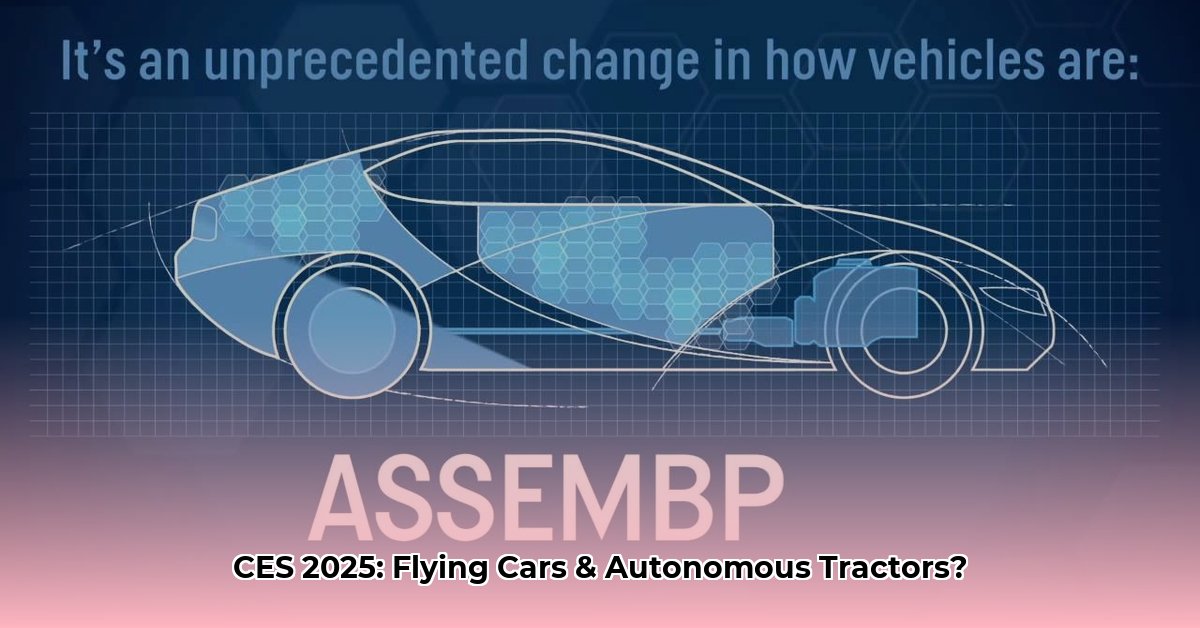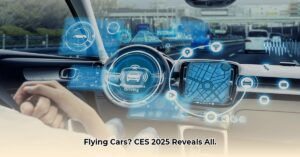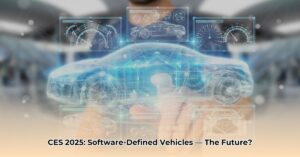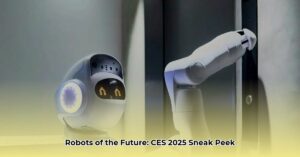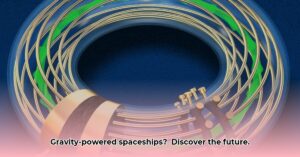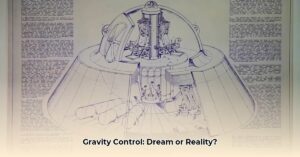CES 2025 gave us a thrilling glimpse into the future of transportation, showcasing innovations poised to revolutionize how we move. From flying cars inching closer to reality to electric vehicles charging at lightning speed, the show floor buzzed with possibilities. Let’s explore the key automotive trends that emerged.
Electrifying the Road: EVs Surge Forward
Electric vehicles (EVs) dominated the conversation, highlighting advancements in charging speed, range, and integrated technology. Honda stole the show with prototypes built on an ultra-thin battery platform, promising a remarkable 10-15 minute rapid-charging time. Slated for a 2026 North American release, these EVs will also feature onboard AI chips and Honda’s Asimo OS, enabling Level 3 autonomous driving. Aptera, focusing on solar-powered mobility, revealed its production-ready solar EV, boasting a potential range of up to 1,000 miles, with solar panels adding approximately 40 miles per day. This suggests that range anxiety may finally become a thing of the past.
The Autonomous Revolution: Beyond Self-Driving Cars
Self-driving technology extended its reach beyond personal vehicles. John Deere presented a lineup of autonomous farm machinery, including tractors, a quarry dump truck, and even a robotic lawnmower. This suggests a future where automation transforms industries like agriculture, increasing efficiency and potentially reshaping labor needs. Honda’s Level 3 autonomous driving features in their upcoming EVs further solidify the growing prominence of self-driving capabilities.
Taking to the Skies: Flying Cars Closer Than Ever?
Flying cars, once a futuristic fantasy, took a significant step towards reality. XPeng AeroHT unveiled the “Land Aircraft Carrier” – a six-wheeled electric vehicle housing a detachable eVTOL air module. Envision driving to the outskirts of a congested city, detaching the air module, and effortlessly bypassing gridlock. With over 3,000 intent orders and a targeted 2026 release date at an estimated $300,000, the demand is there, but widespread adoption likely hinges on overcoming regulatory hurdles and developing the necessary infrastructure. Rictor also showcased the Skyrider X1, a flying electric motorcycle with a top speed of 62 mph and a 40-minute flight time, further diversifying the personal air mobility landscape. Sambo Motors Group presented the HAM III-2, a hybrid air taxi utilizing battery power for vertical takeoff and transitioning to hydrogen fuel cells for horizontal flight, exploring alternative fuel sources for aerial mobility.
Powering the Future: Diverse Energy Solutions Emerge
Beyond traditional batteries, alternative energy sources gained traction. Aptera’s solar integration showcases the potential of solar energy to augment EV range, while Sambo Motors’ hybrid air taxi demonstrates the exploration of diverse power systems. These innovations suggest a likely transition towards a transportation landscape powered by a mix of energy sources tailored to specific vehicle types and usage scenarios.
The Road Ahead: Challenges and Opportunities
While CES 2025 offered a glimpse into a potentially transformative future, it also underscored the challenges ahead. Regulatory frameworks for flying cars and autonomous vehicles need to be established. Infrastructure, including vertiports and charging networks, must be developed to support widespread adoption. Technological advancements in battery technology, autonomous systems, and lightweight materials will be crucial for making these innovations safe, reliable, and affordable.
| Innovation | Company | Key Features | Projected Availability |
|---|---|---|---|
| Electric Vehicles | Honda | 10-15 min rapid charging, AI chips, Level 3 autonomy | 2026 (North America) |
| Solar Electric Vehicle | Aptera | Up to 1,000-mile range, solar charging | Production-Ready |
| Flying Car/eVTOL | XPeng AeroHT | Detachable eVTOL, six-wheeled EV | 2026 |
| Flying Motorcycle | Rictor | 62 mph top speed, 40-min flight time | Information Pending |
| Hybrid Air Taxi | Sambo Motors Group | Battery/Hydrogen fuel cell hybrid | Information Pending |
| Autonomous Farm Equipment | John Deere | Self-driving tractors, dump truck, lawnmower | Information Pending |
The innovations unveiled at CES 2025 suggest that the future of transportation will likely be electric, autonomous, and possibly even airborne. While challenges remain, the progress showcased highlights the dynamic nature of the automotive industry and underscores its potential to reshape how we move in the years to come. As research and development progress, we can expect further refinements and breakthroughs, potentially accelerating the timeline for these transformative technologies to become an integral part of our everyday lives.

